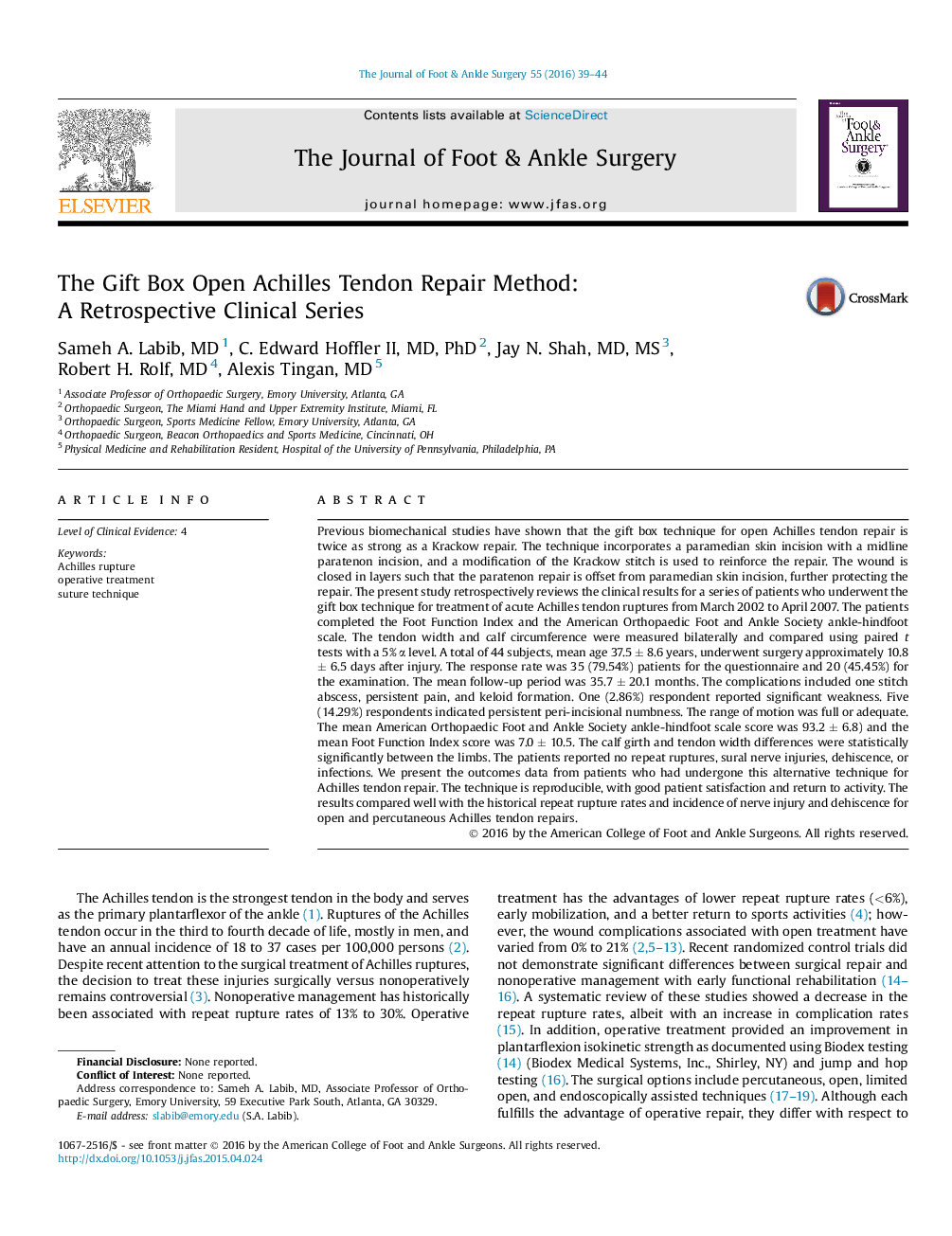| Article ID | Journal | Published Year | Pages | File Type |
|---|---|---|---|---|
| 2719297 | The Journal of Foot and Ankle Surgery | 2016 | 6 Pages |
Previous biomechanical studies have shown that the gift box technique for open Achilles tendon repair is twice as strong as a Krackow repair. The technique incorporates a paramedian skin incision with a midline paratenon incision, and a modification of the Krackow stitch is used to reinforce the repair. The wound is closed in layers such that the paratenon repair is offset from paramedian skin incision, further protecting the repair. The present study retrospectively reviews the clinical results for a series of patients who underwent the gift box technique for treatment of acute Achilles tendon ruptures from March 2002 to April 2007. The patients completed the Foot Function Index and the American Orthopaedic Foot and Ankle Society ankle-hindfoot scale. The tendon width and calf circumference were measured bilaterally and compared using paired t tests with a 5% α level. A total of 44 subjects, mean age 37.5 ± 8.6 years, underwent surgery approximately 10.8 ± 6.5 days after injury. The response rate was 35 (79.54%) patients for the questionnaire and 20 (45.45%) for the examination. The mean follow-up period was 35.7 ± 20.1 months. The complications included one stitch abscess, persistent pain, and keloid formation. One (2.86%) respondent reported significant weakness. Five (14.29%) respondents indicated persistent peri-incisional numbness. The range of motion was full or adequate. The mean American Orthopaedic Foot and Ankle Society ankle-hindfoot scale score was 93.2 ± 6.8) and the mean Foot Function Index score was 7.0 ± 10.5. The calf girth and tendon width differences were statistically significantly between the limbs. The patients reported no repeat ruptures, sural nerve injuries, dehiscence, or infections. We present the outcomes data from patients who had undergone this alternative technique for Achilles tendon repair. The technique is reproducible, with good patient satisfaction and return to activity. The results compared well with the historical repeat rupture rates and incidence of nerve injury and dehiscence for open and percutaneous Achilles tendon repairs.
